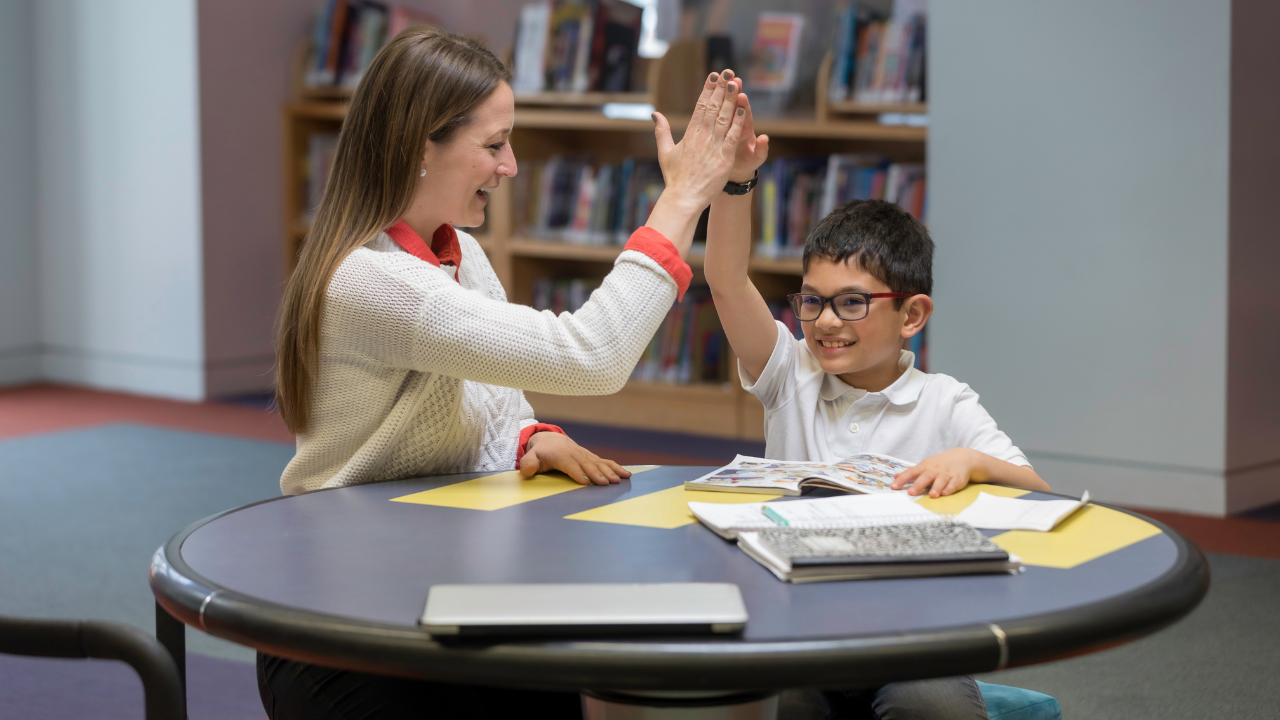3 Steps to Gradual Release of Responsibility

Casey and her husband have been married for 22 years now and she likes to joke that her husband is her “Tech Guy.” He is her go-to guy when she needs help with her computer, printer, or any tech at all. Casey tends to get quite frustrated, really quickly, with any tech issue.
However, over time, she’s realized that she’s stopped even trying to figure tech issues out on her own and instead immediately asks her husband for help.
One day, Casey’s husband became frustrated when she asked him to fix something that he had already fixed for her many, many times. Plus, he had already told her, multiple times, how to fix this problem herself. He didn’t understand how she didn’t already know how to fix the problem.

But, Casey knows herself as a learner. So she asked him to first, show her how to fix the problem, then walk her through it as she fixed the problem, and finally let her do it on her own while he watched. Then, she would no longer need to ask for his help with this specific tech issue.
This is actually how many learners are able to master a new skill and it’s a perfect example of the gradual release of responsibility.
What is the Gradual Release of Responsibility Framework?
The gradual release of responsibility is one of the most powerful approaches you can use when teaching struggling readers. It’s also often referred to as the I Do, We Do, You Do model. This framework or model supports the way the brain learns best.
It is essential for struggling readers as it sets them up for success through explicit instruction and immediate corrective feedback. Explicit instruction makes the lesson clear for students by teaching skills in a sequential way, modeling what is needed, and providing ample practice.
The 3 Stages to Gradual Release of Responsibility:
I Do
Begin by stating the goal and purpose of the lesson to the student, right away. Be clear and consistent in modeling and demonstrating. Employ and demonstrate your own metacognition through the use of think-alouds.
In this stage, show your student exactly what you mean and exactly what you want from them. Provide them with the necessary tools and explicit instruction in order to be successful. This stage is teacher-driven; it’s teacher modeling in a way that sets students up for success.

We Do
In this stage, the student works on applying the concept, skill, strategy, or new learning with the guidance of the instructor. As the educator, you are asking questions and being mindful of what the student is able to do while continuing to guide them as needed.
At this stage, you may need to add in or scaffold more direct assistance if you note the student is struggling or misunderstanding.
You can also use prompts in a variety of ways to encourage active learning. And, always provide immediate corrective feedback at this stage. Lead the child to understand what needs to be corrected. Also, shift to help your student use their own metacognition.
You Do
This is where you ultimately want your student to be. You’ve laid the groundwork. You’ve built the scaffold. You’ve walked them through the process. You’ve asked them prompts. You've given them reminders. You’ve given immediate corrective feedback. This stage is where your student applies all of that knowledge.
It’s not simply about your student working alone, it’s more about them applying their thinking and using their metacognitive skills to transfer the knowledge that was imparted to them and put it into practice. They will also take what they’ve learned and apply it to new learning.
It’s not just about the student showing the teacher or doing it for the teacher. It’s about the student doing it for themselves!
For even more on the gradual release of responsibility, check out our latest episode of the Together in Literacy podcast. If you like what you hear, don’t forget to rate, leave a positive review, and subscribe!
Looking for strategies and resources?
Sign up for our newsletter for news, resources, and freebies delivered straight to your inbox.
We hate SPAM. We will never sell your information, for any reason.
